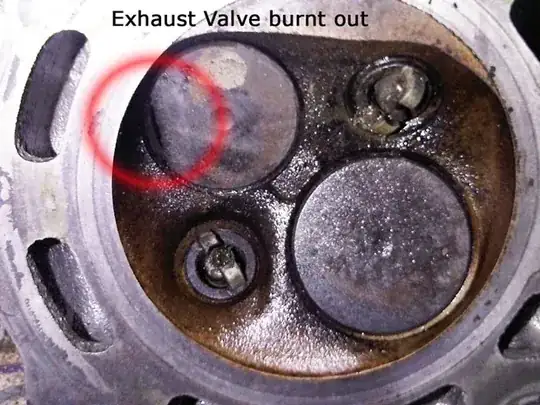A burnt valve can happen for one of many reasons, but the underlying issue is, the valve is not sealing correctly and allows hot engine gases during the combustion phase to leak past the seal which is formed by the valve and seat. When the seal is lost, the hot exhaust gases escape past the valve (can happen to either the intake or the exhaust valve, but is much more common on the exhaust) and wreak havoc. The burnt valve is usually not the cause of the issue, but more so the outcome of a different issue.
A normal running 4-stroke engine has valves which allow for the incoming air/fuel mixture into the cylinder (or just air on direct injected engines) and for the outgoing exhaust fumes to escape out the tail pipe. Valves in and of themselves could not stand up to the extreme environment of the combustion process. When a valve closes and is sealed against the seat (which is embedded into the head), one of the salvation factors for the valve is heat transference. The head absorbs some of the heat which is collected by the valves. This heat is then transferred out to the coolant system, which takes it away from the area and allows things to run as we consider normal. If a valve, for whatever reason, is not allowed to close completely, a leak in both air/fuel during the compression cycle and exhaust during the combustion cycle occurs. This causes several different problems within the engine:
- Cylinder power imbalance
- If leak occurs on the intake side, it causes intake flow issues with other cylinders
- Burnt valves (due to escaping exhaust gases during the combustion cycle)
A valve can get into non-sealing state for several reasons. These might include, but aren't limited to:
- Carbon buildup
- Physical valve damage (broke valve seat, bent valve, etc)
- Sticking at the valve guide
- Broke, damaged, or weak valve spring
Any one of these can cause a valve to stay open during the combustion event, which allows very hot gases to escape past the valve. Since it is not allowed to fully seat, there is nowhere for the excess heat to go. It stays at the valve head and damage soon occurs.
